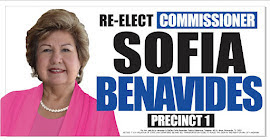As a student at Garden Park Elementary School in November 1963, our third-grade class went on a filed trip to Harlingen to see how bread (Holsum Bakery) and ice cream (at Hygeia) was made.
At Holsum we got some sweet rolls and at Hygeia ice cream and a walk-through on how they were experimenting with sea water to enhance their product.
 We got loaded on the bus and were on our way back to the school in Brownsville when the bus driver stopped at the gate and one of our teachers stood at the front of the bus and told us that President John F. Kennedy was dead from an assassin's bullet in Dallas.
We got loaded on the bus and were on our way back to the school in Brownsville when the bus driver stopped at the gate and one of our teachers stood at the front of the bus and told us that President John F. Kennedy was dead from an assassin's bullet in Dallas.In the silence that followed, we saw our teachers – in those days our respected role models – break into tears. We shuffled out the bus in silence – stunned by the news of John F. Kennedy's but more by watching our teachers burst into tears with grief – and one student asked: "Does that mean we don't have a president?"
Since he burst upon the scene preaching a message of cultural inclusion, Kennedy was revered by Mexican-Americans in the United States. His Alliance for Progress announced in 1961 to Latin America was a sea change from previous U.S. initiatives for the region.
And Kennedy was the first to announce the idea for an organization to send college students to help people around the world. He pushed for it during the 1960 presidential campaign, at a late-night speech at the University of Michigan in Ann Arbor, October 14, 1960, on the steps of the Michigan Union.
He later dubbed the proposed organization the "Peace Corps." A brass marker commemorates the place where Kennedy stood. In the weeks after the 1960 election, the study group at Colorado State University, released their feasibility a few days before Kennedy's Presidential Inauguration in January 1961.
Much later, Kennedy would show his resoluteness in the face of Russian adventurism in Cuba by standing up to the Soviets and making them remove the nuclear missiles from that island. He would be gunned down – as would be Robert, his brother – by assassins.
The grief in the streets of Las Prietas was tangible. Many homes already had embroidered tapestries of Kennedy and his wife Jackie in the living rooms of the humble homes in that west-end barrio. His death – we would later find out – would herald a generational index point in our lives.
Many years later we would find out that our hero, like all human beings, had a few warts we had not discerned. We found out that he had pushed along the plan to overthrown the Fidel Castro regime to the point of approving CIA-sponsored assassination attempts against its leaders, that he was carried along by the inertia of militarism against the Vietnamese people's battle against its French occupiers that erupted into the Vietnam War, and that he even cheated on the princess of Cemelot with Marylin Monroe.
But in that sunny November 22, 1963 day after our field day trip to Harlingen, we only knew that something strange and awful had befallen our neighborhood and our country, and were stunned at the news. The street where I lived was also named Kennedy.





No comments:
Post a Comment